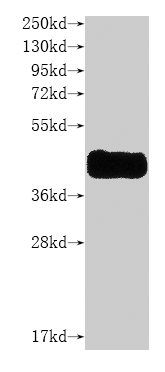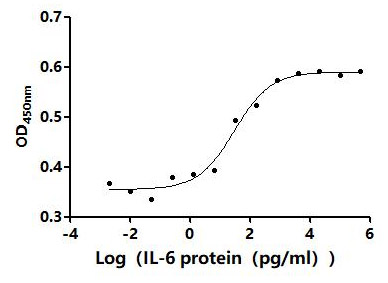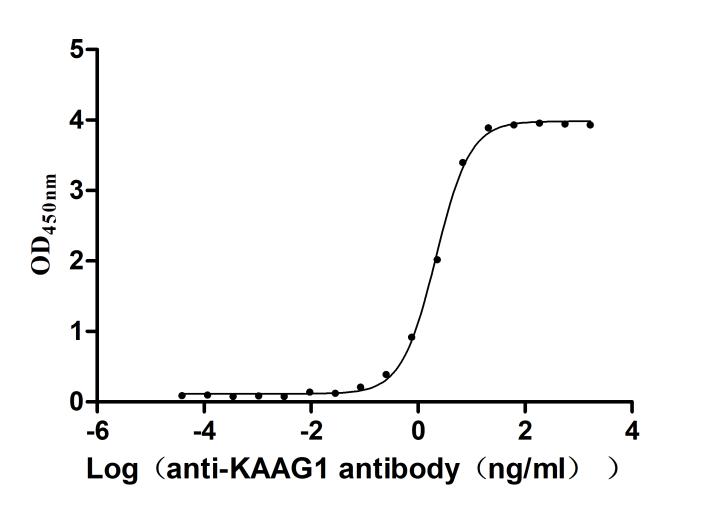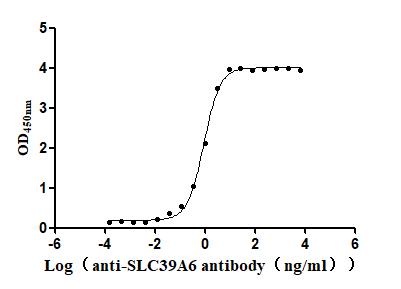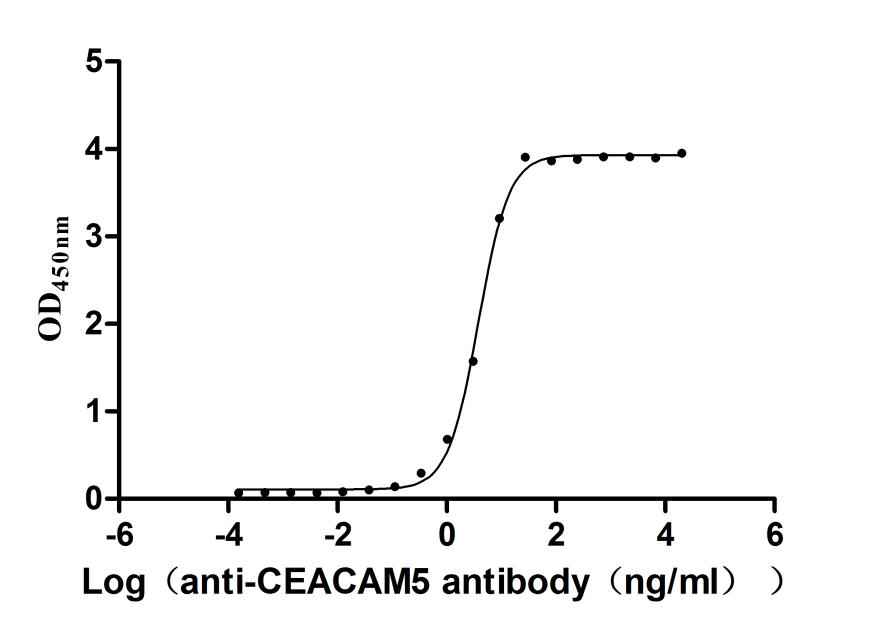Recombinant Human Transcriptional enhancer factor TEF-1 (TEAD1)
Unavailable-
中文名稱:人TEAD1重組蛋白
-
貨號:CSB-YP023363HU
-
規格:¥1500
-
圖片:
-
(Tris-Glycine gel) Discontinuous SDS-PAGE (reduced) with 5% enrichment gel and 15% separation gel.
-
Based on the SEQUEST from database of Yeast host and target protein, the LC-MS/MS Analysis result of CSB-YP023363HU could indicate that this peptide derived from Yeast-expressed Homo sapiens (Human) TEAD1.
-
Based on the SEQUEST from database of Yeast host and target protein, the LC-MS/MS Analysis result of CSB-YP023363HU could indicate that this peptide derived from Yeast-expressed Homo sapiens (Human) TEAD1.
-
-
其他:
產品詳情
-
純度:Greater than 90% as determined by SDS-PAGE.
-
基因名:
-
Uniprot No.:
-
別名:AA; Atrophia areata peripapillary chorioretinal degeneration; NTEF 1; NTEF-1; NTEF1; Protein GT IIC; Protein GT-IIC; REF 1; REF1; SV40 transcriptional enhancer factor; TCF 13; TCF-13; TCF13; TEA domain family member; TEA domain family member 1 (SV40 transcriptional enhancer factor); TEA domain family member 1; TEAD 1; TEAD 1 protein; TEAD-1; TEAD1; TEAD1 protein; TEAD1_HUMAN; TEF 1; TEF1; Transcription factor 13 (SV40 transcriptional enhancer factor); Transcription factor 13; Transcriptional enhancer factor 1; Transcriptional enhancer factor TEF-1; Transcriptional enhancer factor TEF1
-
種屬:Homo sapiens (Human)
-
蛋白長度:Full Length
-
來源:Yeast
-
分子量:49.9kDa
-
表達區域:1-426aa
-
氨基酸序列MEPSSWSGSESPAENMERMSDSADKPIDNDAEGVWSPDIEQSFQEALAIYPPCGRRKIILSDEGKMYGRNELIARYIKLRTGKTRTRKQVSSHIQVLARRKSRDFHSKLKDQTAKDKALQHMAAMSSAQIVSATAIHNKLGLPGIPRPTFPGAPGFWPGMIQTGQPGSSQDVKPFVQQAYPIQPAVTAPIPGFEPASAPAPSVPAWQGRSIGTTKLRLVEFSAFLEQQRDPDSYNKHLFVHIGHANHSYSDPLLESVDIRQIYDKFPEKKGGLKELFGKGPQNAFFLVKFWADLNCNIQDDAGAFYGVTSQYESSENMTVTCSTKVCSFGKQVVEKVETEYARFENGRFVYRINRSPMCEYMINFIHKLKHLPEKYMMNSVLENFTILLVVTNRDTQETLLCMACVFEVSNSEHGAQHHIYRLVKD
Note: The complete sequence may include tag sequence, target protein sequence, linker sequence and extra sequence that is translated with the protein sequence for the purpose(s) of secretion, stability, solubility, etc.
If the exact amino acid sequence of this recombinant protein is critical to your application, please explicitly request the full and complete sequence of this protein before ordering. -
蛋白標簽:N-terminal 6xHis-tagged
-
產品提供形式:Liquid or Lyophilized powder
Note: We will preferentially ship the format that we have in stock, however, if you have any special requirement for the format, please remark your requirement when placing the order, we will prepare according to your demand. -
緩沖液:If the delivery form is liquid, the default storage buffer is Tris/PBS-based buffer, 5%-50% glycerol.
Note: If you have any special requirement for the glycerol content, please remark when you place the order.
If the delivery form is lyophilized powder, the buffer before lyophilization is Tris/PBS-based buffer, 6% Trehalose. -
儲存條件:Store at -20°C/-80°C upon receipt, aliquoting is necessary for mutiple use. Avoid repeated freeze-thaw cycles.
-
保質期:The shelf life is related to many factors, storage state, buffer ingredients, storage temperature and the stability of the protein itself.
Generally, the shelf life of liquid form is 6 months at -20°C/-80°C. The shelf life of lyophilized form is 12 months at -20°C/-80°C. -
貨期:3-7 business days
-
注意事項:Repeated freezing and thawing is not recommended. Store working aliquots at 4°C for up to one week.
-
產品描述:
Recombinant Human Transcriptional enhancer factor TEF-1 (TEAD1) is a full-length protein expressed in the yeast. It was fused with a 6xHis-tag at the N-terminus. This TEAD1 protein containing 426 amino acids was identified and validated by the LC-MS/MS Analysis. Its purity is greater than 90% as determined by SDS-PAGE. The purified TEAD1 migrated on the SDS-PAGE at a molecular mass of about 50 kDa. Because this protein is in stock, the delivery time will be relatively shortened. This recombinant TEAD1 protein may be used for antibody production and in the studies of the cardiovascular research field.
TEAD-1 is required for cardiac morphogenesis, and its relatives cannot compensate for the TEAD-1 function during embryogenesis. And TEAD-1 possesses transactivation activity on the TGF-α promoter through its specific interaction with the proximal regulatory element (PRE). This may suggest a strategy for controlling the function of TGF-α, which is frequently expressed in various cancers and is involved in the genesis and maintenance of these malignancies.
-
Datasheet & COA:Please contact us to get it.
相關產品
問答及客戶評論
I have a question about TEAD1 (CSB-YP023363HU).
Is it possible to request this product in PBS instead of the Tris-based buffer it is normally supplied in?
We could use PBS as storage buffer. Please kindly remark this requirement when send your PO. We need to tell you in advance that we're not sure whether this protein can mantain stable in PBS. If this protein is unstable in this buffer, we will deliver this protein in default buffer (Tris buffer with 50% glycerol).
Is there an option to elute the protein into water and then lyophilize it, so that there is no salt in the protein? Additionally, would there be an additional charge?
For the "salt" you mentioned, if you refer to Nacl, we could guarantee no salt in the protein. We could use tris-based buffer or HEPES. Please kindly confirm with the customer which buffer they want. As long as the protein is stable, we could replace any buffer that customer specifies.
You only need to remark this requirement before placing your order. There is no extra cost.
靶點詳情
-
功能:Transcription factor which plays a key role in the Hippo signaling pathway, a pathway involved in organ size control and tumor suppression by restricting proliferation and promoting apoptosis. The core of this pathway is composed of a kinase cascade wherein MST1/MST2, in complex with its regulatory protein SAV1, phosphorylates and activates LATS1/2 in complex with its regulatory protein MOB1, which in turn phosphorylates and inactivates YAP1 oncoprotein and WWTR1/TAZ. Acts by mediating gene expression of YAP1 and WWTR1/TAZ, thereby regulating cell proliferation, migration and epithelial mesenchymal transition (EMT) induction. Binds specifically and cooperatively to the SPH and GT-IIC 'enhansons' (5'-GTGGAATGT-3') and activates transcription in vivo in a cell-specific manner. The activation function appears to be mediated by a limiting cell-specific transcriptional intermediary factor (TIF). Involved in cardiac development. Binds to the M-CAT motif.
-
基因功能參考文獻:
- YAP1 interacted with TEAD1, exerted their transcriptional control of the functional target, glucose transporter 1 (Glut1). PMID: 28892790
- Yap1 post-translational modifications favoring its ubiquitination and apoptosis characterize hepatocellular carcinoma (HCC) with better prognosis, whereas conditions favoring the formation of YAP1-TEAD complexes are associated with aggressiveness and acquisition of stemness features by HCC cells PMID: 27359056
- TEAD1 and TEAD4 are oncogenic factors, whose aberrant activation are, in part, mediated by the silence of miR-377-3p, miR-1343-3p and miR-4269. PMID: 28759040
- adult human and mouse hearts had more Taz than Yap1 by mRNA and protein expression and their increases in diseased hearts were proportional and did not change Yap1/Taz ratio. Yap1, Taz, and Tead1 were accumulated in the nuclear fraction and cardiomyocyte nuclei of diseased hearts PMID: 29154888
- Here, the authors show that TEAD1-expressing skeletal muscle of transgenic mice features a dramatic hyperplasia of muscle stem cells (i.e. satellite cells, SCs) but surprisingly without affecting muscle tissue size. PMID: 27725085
- This identifies the YAP1/TEAD1 complex as the representative dysregulated profile of Hippo signaling in OS and provides proof-of-principle that targeting TEAD1 may be a therapeutic strategy of osteosarcoma. PMID: 28483529
- The authors show MRTF family proteins bind YAP via a conserved PPXY motif that interacts with the YAP WW domain. This interaction allows MRTF to recruit NcoA3 to the TEAD-YAP transcriptional complex and potentiate its transcriptional activity. PMID: 28028053
- MYC and TEAD activity is able to stratify different breast cancer subtypes in large panels of breast cancer patients. PMID: 27433809
- Collectively, these results indicate that human papillomavirus 16 E6 induces upregulation of APOBEC3B through increased levels of TEADs, highlighting the importance of the TEAD-APOBEC3B axis in carcinogenesis. PMID: 28077648
- Upregulation of transcriptional enhancer activator domain 1 was found in hepatocellular carcinoma tissues and inversely correlated with miR-590-3p. Our results indicate a tumor suppressor role of miR-590-3p in hepatocellular carcinoma through targeting transcriptional enhancer activator domain 1 and suggest its use in the diagnosis and prognosis of liver cancer. PMID: 28349829
- TEAD1 mediates YAP1 chromatin-binding genome-wide. PMID: 26295846
- show that the proangiogenic microfibrillar-associated protein 5 (MFAP5) is a direct transcriptional target of YAP/TEAD in cholangiocarcinoma cells transcription factors. PMID: 26173433
- TAZ negatively regulate transcription of DeltaNp63 through TEAD1,2,3 and 4 transcription factors. PMID: 25995450
- Our data suggest that AIC is a genetically heterogeneous disease and is not restricted to the X chromosome, and that TEAD1 mutations may be present in male patients. PMID: 26091538
- Our findings suggest that genetic variants of Hippo pathway genes, particularly YAP1 rs11225163, TEAD1 rs7944031 and TEAD4 rs1990330, may independently or jointly modulate survival of CM patients. PMID: 25628125
- Suggest central role for TEAD and YAP as signal-responsive regulators of multipotent pancreatic progenitors. PMID: 25915126
- the YAP-TEAD interaction can be disrupted using cyclic YAP-like peptides, which targets the HIPPO pathway PMID: 25384421
- the first evidence demonstrating that TEAD1 is a novel general repressor of smooth muscle-specific gene expression through interfering with myocardin binding to SRF. PMID: 24344135
- identified an intronic region of the NAIP gene responding to TEAD1/YAP activity, suggesting that regulation of NAIP by TEAD1/YAP is at the transcriptional level PMID: 23994529
- Data indicate that knockdown of TEAD1/3/4 induces an almost identical cellular senescent phenotype as YAP silencing. PMID: 23576552
- our data reveal a new, Livin-dependent, apoptotic role for TEAD1 in mammals and provide mechanistic insight downstream of TEAD1 deregulation in cancers. PMID: 23029054
- TEAD1 has non-AUG translation initiation PMID: 1851669
- These results are consistent with two plausible models of cryptic MCAT enhancer regulation by Pur alpha, Pur beta, and MSY1 involving either competitive single-stranded DNA binding or masking of MCAT-bound transcription enhancer factor-1. PMID: 11751932
- Transcription enhancer factor 1 binds multiple muscle MEF2 and A/T-rich elements during fast-to-slow skeletal muscle fiber type transitions PMID: 12861002
- the mutation in the TEAD1 gene is the cause of Sveinsson's chorioretinal atrophy. PMID: 15016762
- regulation of IFITM3 by TEF-1 demonstrates that TEF-1 dependent regulation is more widespread than its previously established role in the expression of muscle specific genes PMID: 18177740
- TEAD1 inhibits prolactin gene expression in cultured human uterine decidual cells. PMID: 18775765
- TEAD1 and the ubiquitin ligase c-Cbl were identified as novel basal cell markers in prostate cancer PMID: 19002168
- Here we show that during vertebrate neural tube development, the TEA domain transcription factor (TEAD) is the cognate DNA-binding partner of YAP. PMID: 19015275
- The primary cellular origin of circumpapillary dysgenesis of the pigment epithelium is within the choroid instead of the pigment epithelium. PMID: 19410955
- A missense mutation (Y421H) in TEAD1 is tightly linked to Sveinsson's chorioretinal atrophy (SCRA), an autosomal dominant eye disease characterized by symmetrical lesions radiating from the optic disc involving the retina and the choroid. PMID: 15016762
- TEAD1 (TEF-1) interacts with a muscle-specific cofactor to promote skeletal muscle gene expression. PMID: 12376544
顯示更多
收起更多
-
相關疾?。?/div>Sveinsson chorioretinal atrophy (SCRA)亞細胞定位:Nucleus.組織特異性:Preferentially expressed in skeletal muscle. Lower levels in pancreas, placenta, and heart.數據庫鏈接:
Most popular with customers
-
Express system: Mammalian cell
Species: Homo sapiens (Human)
-
Recombinant Human Tumor necrosis factor ligand superfamily member 9 (TNFSF9), partial (Active)
Express system: Mammalian cell
Species: Homo sapiens (Human)
-
Recombinant Mouse Claudin-18.2 (Cldn18.2)-VLPs (Active)
Express system: Mammalian cell
Species: Mus musculus (Mouse)
-
Recombinant Human C-C chemokine receptor type 8 (CCR8)-VLPs (Active)
Express system: Mammalian cell
Species: Homo sapiens (Human)
-
-
Recombinant Human Kidney-associated antigen 1 (KAAG1) (Active)
Express system: E.coli
Species: Homo sapiens (Human)
-
Recombinant Macaca fascicularis Zinc transporter ZIP6 isoform X1(SLC39A6),partial (Active)
Express system: Baculovirus
Species: Macaca fascicularis (Crab-eating macaque) (Cynomolgus monkey)
-
Express system: Mammalian cell
Species: Macaca mulatta (Rhesus macaque)

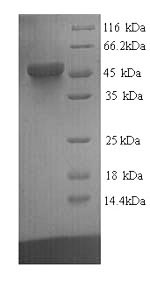
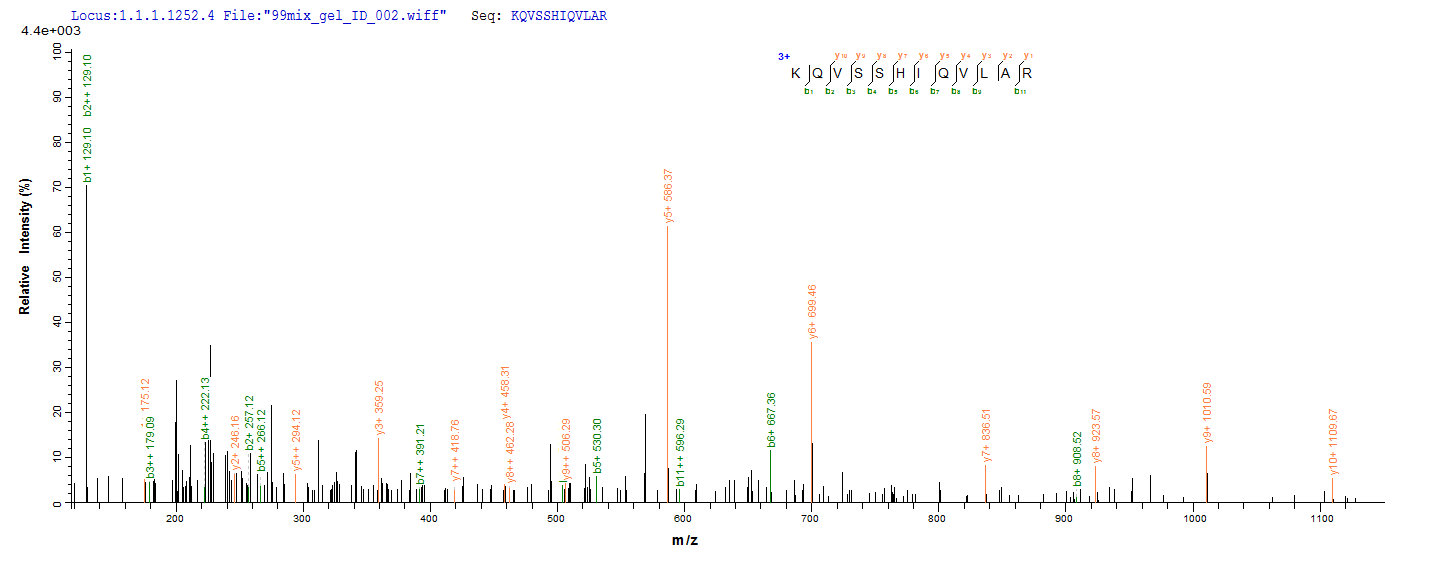
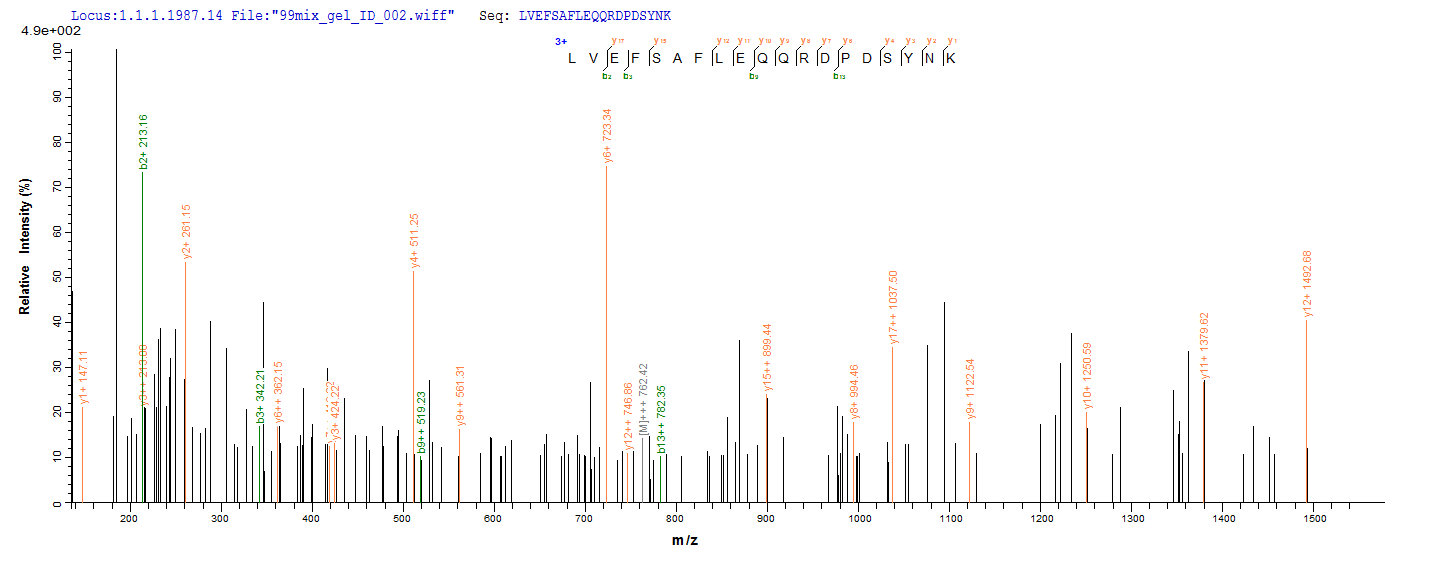

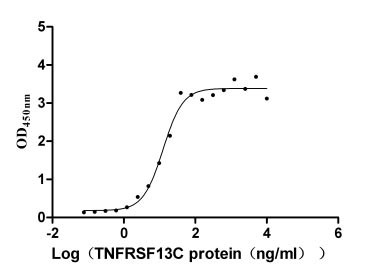
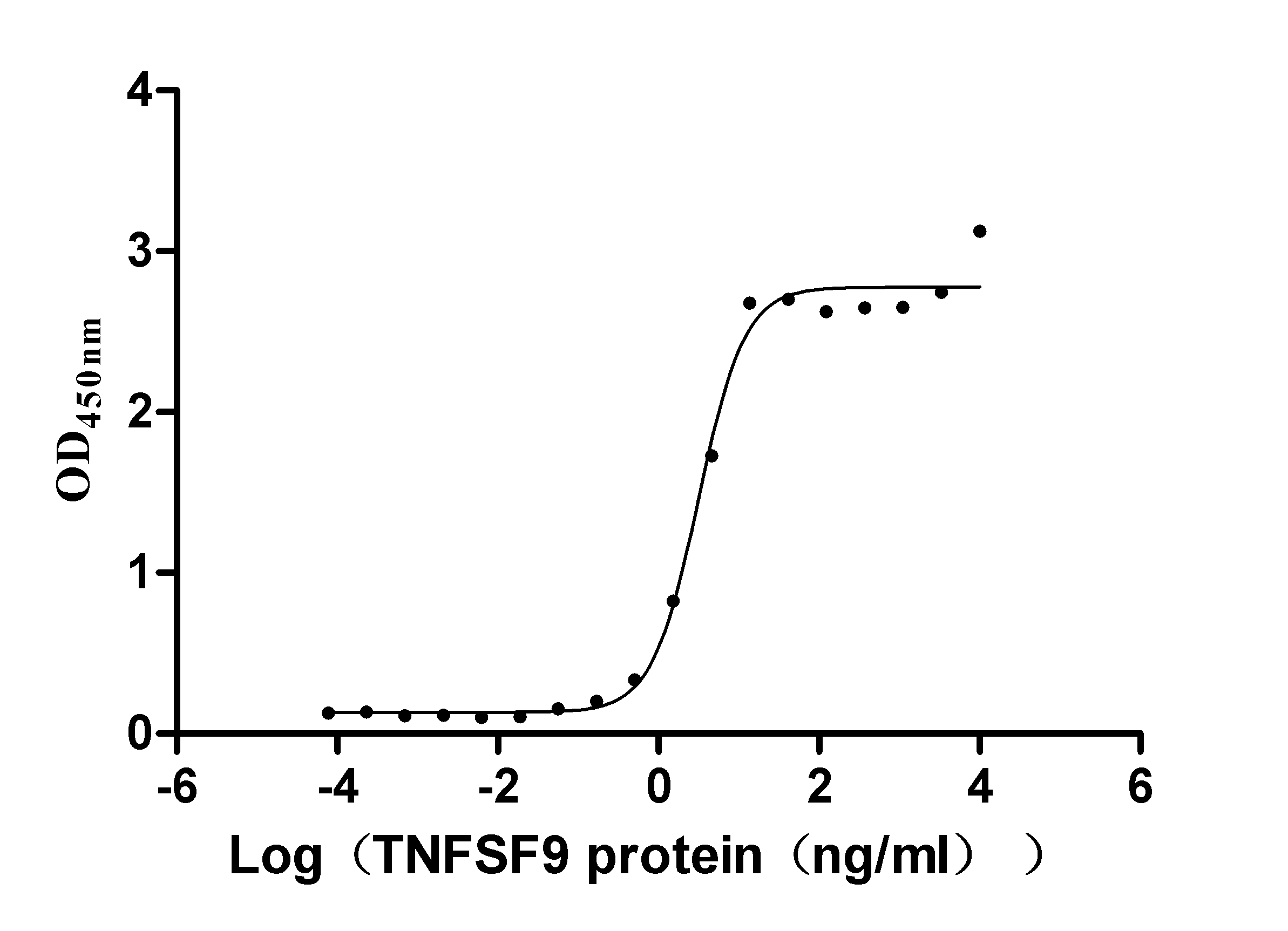
-AC1.jpg)
